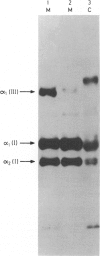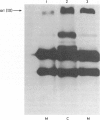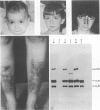Abstract
Ehlers Danlos syndrome type IV is an often lethal disease caused by various mutations of type III collagen genes. It presents in infancy and childhood in several ways, and the symptoms and signs include low birth weight, prematurity, congenital dislocation of the hips, easy inappropriate bruising (sometimes suspected as child battering), and a diagnostic facial phenotype. These features predict a lethal adult disease often complicated by fatal arterial rupture in early or middle adult life. Most affected patients can be diagnosed from radiolabelled collagen protein profiles by polyacrylamide gel electrophoresis. Prenatal diagnosis by specific type III collagen restriction fragment length polymorphisms is possible in some families, and will become increasingly important. Prenatal diagnosis and prevention of the disease in selected families is already possible and will be widely available in the future.
Full text
PDF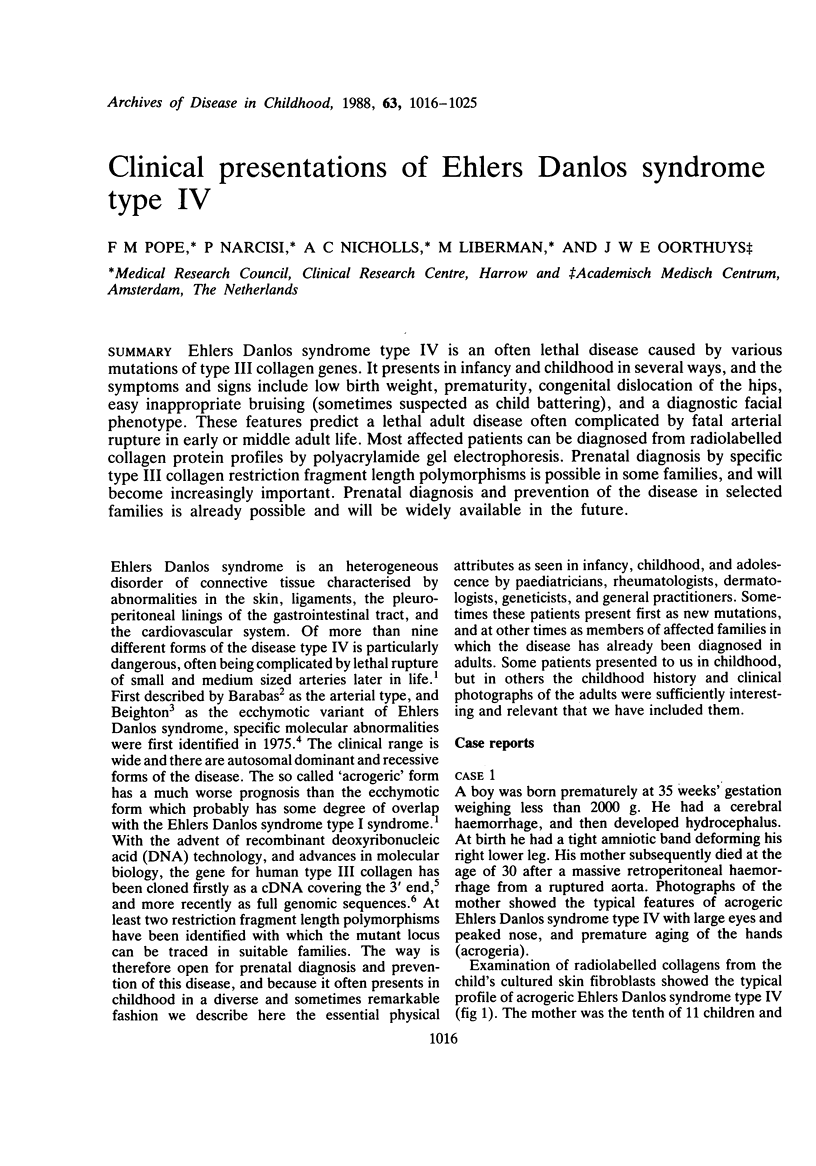
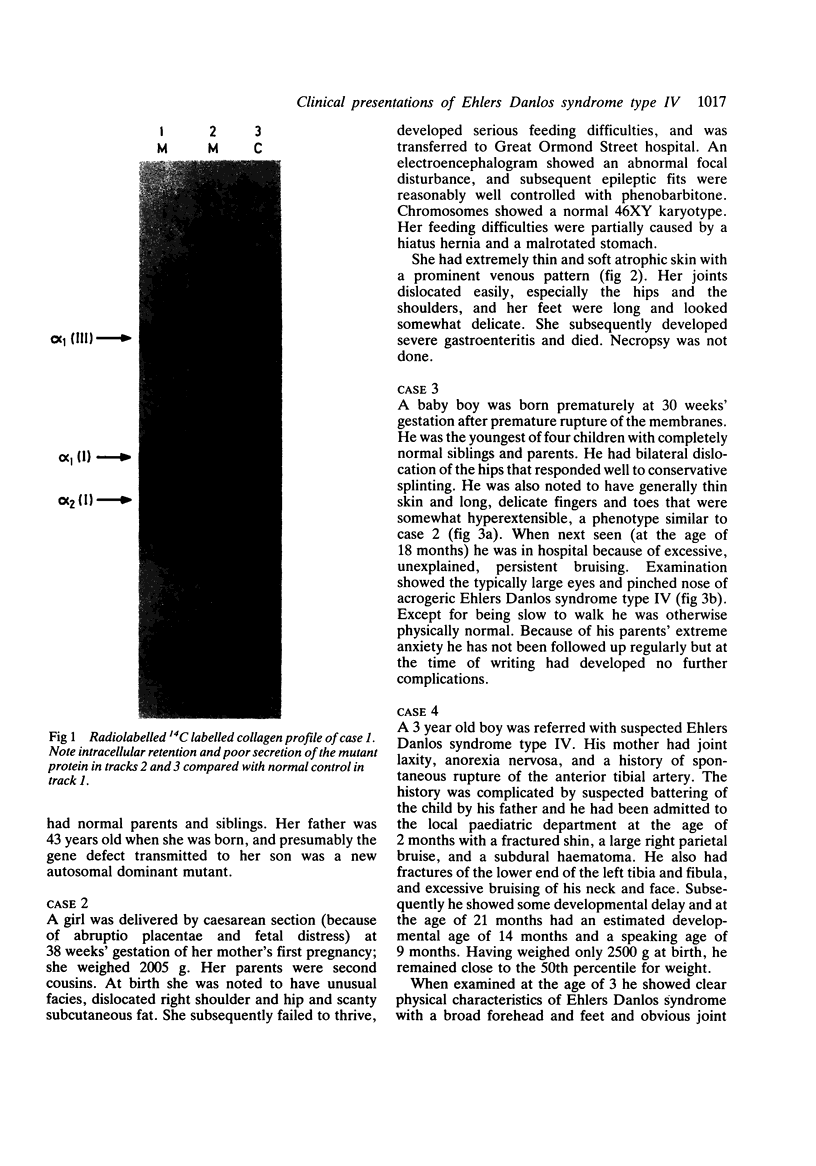
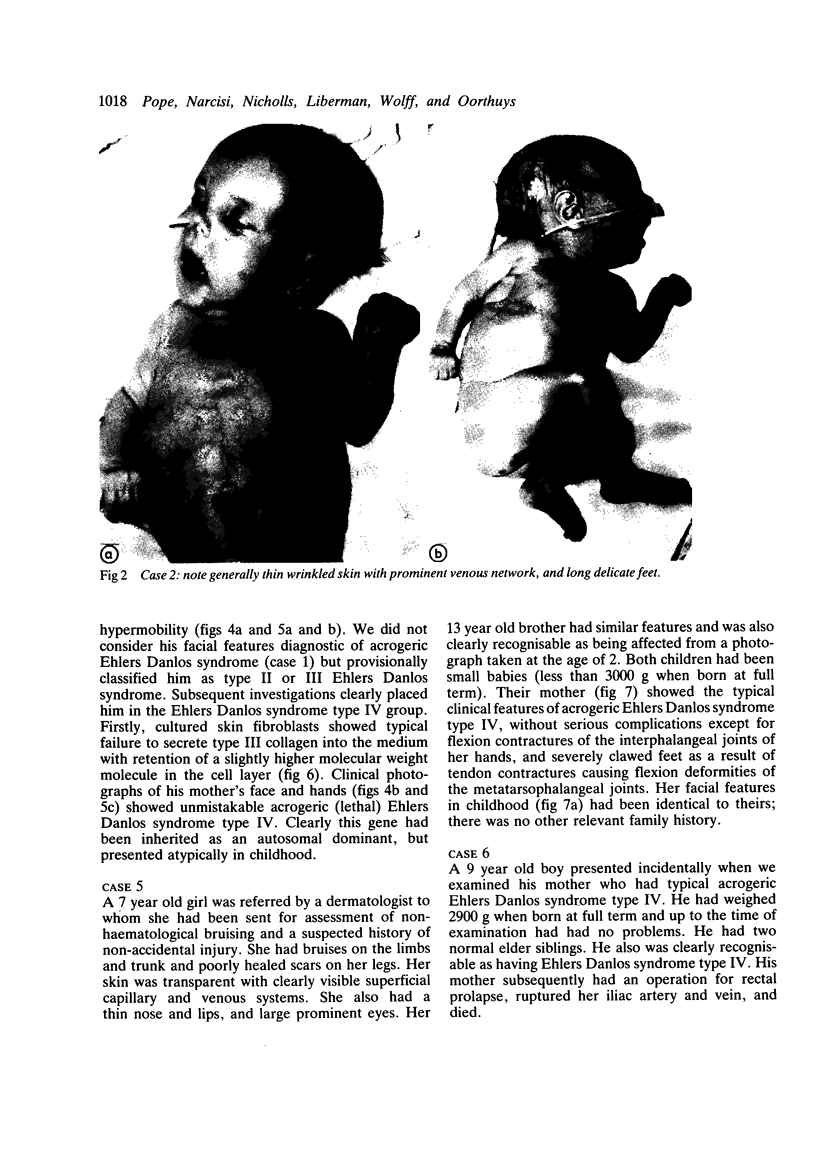
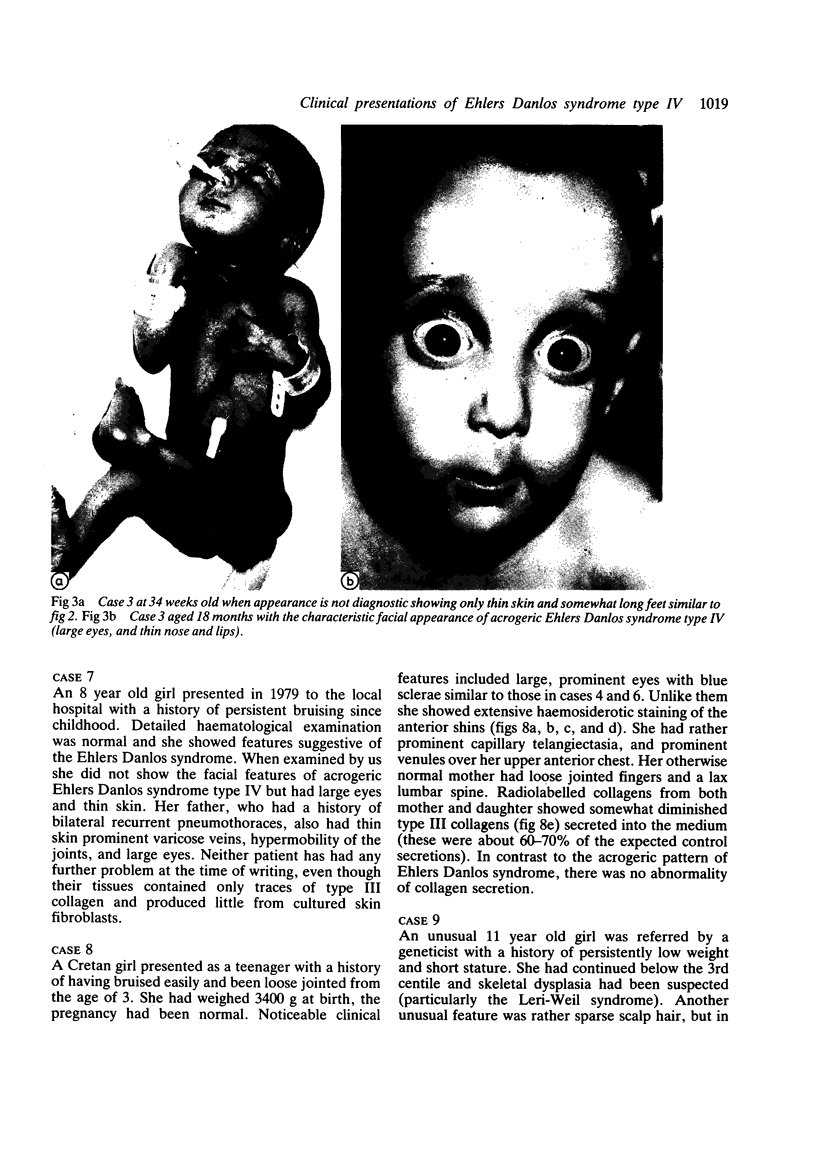

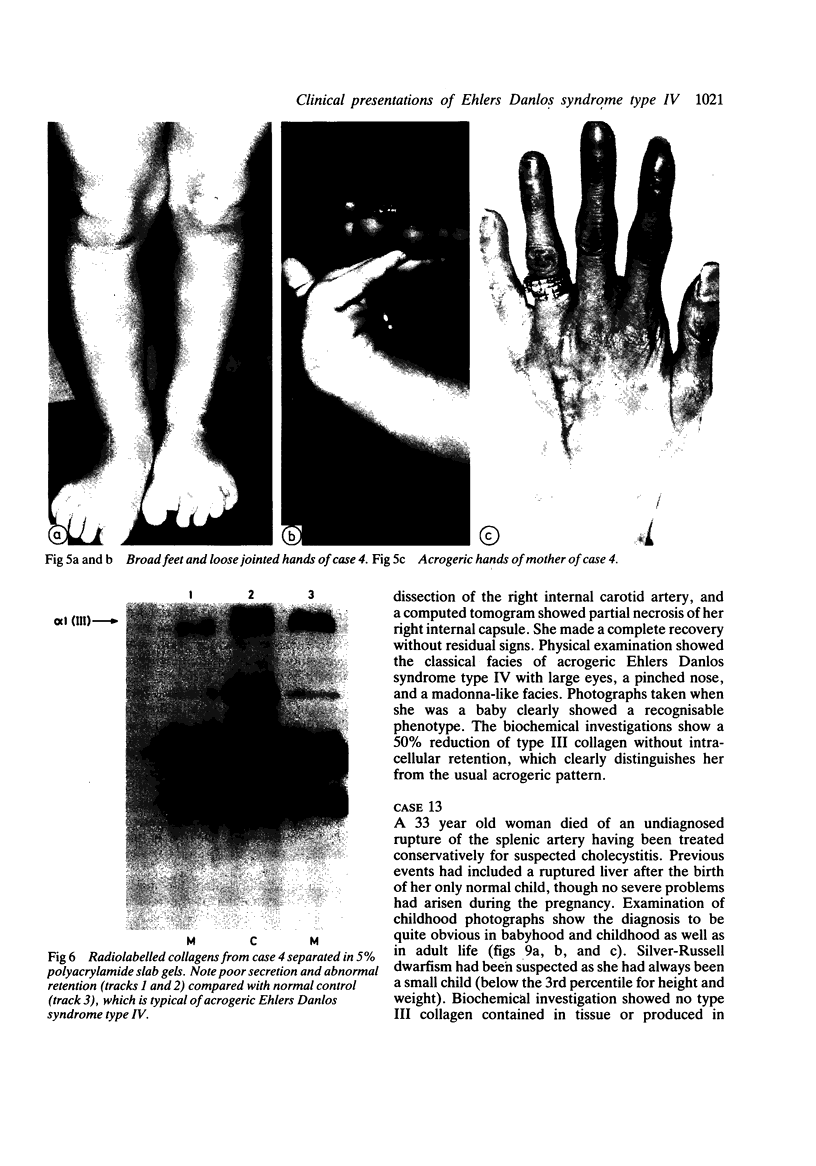
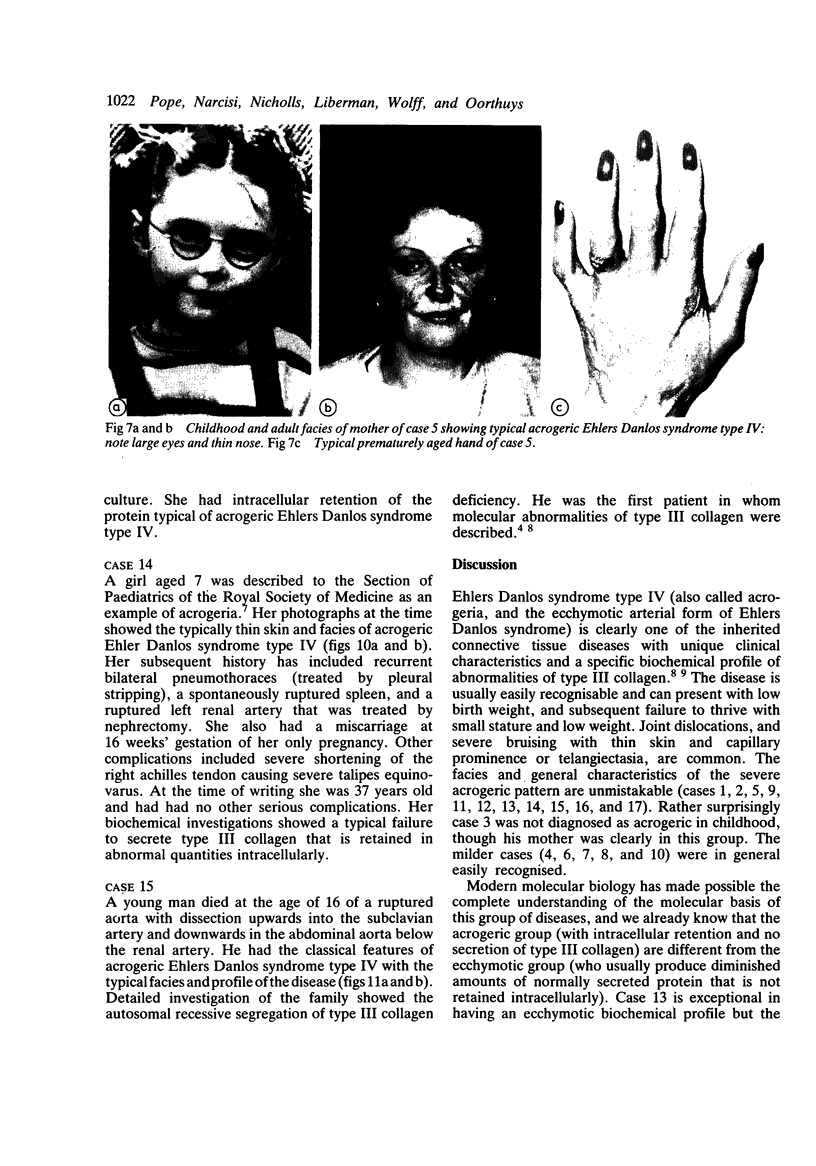
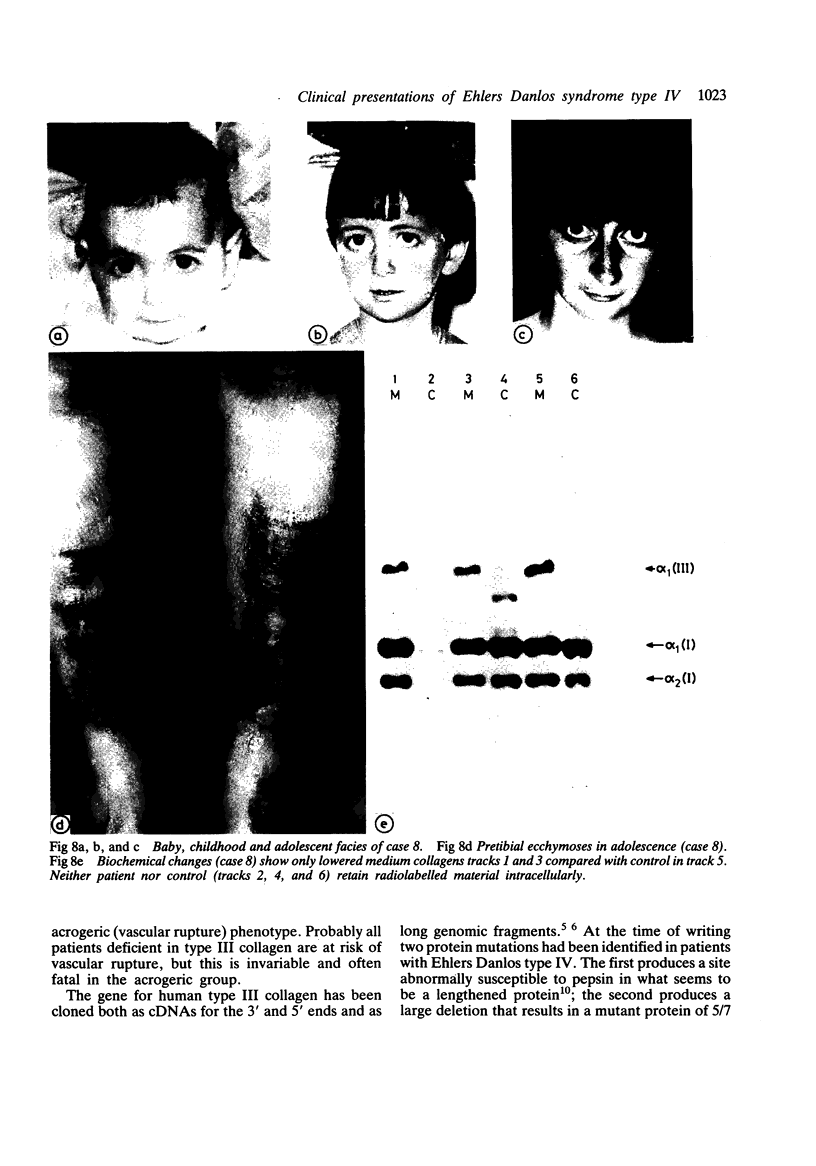
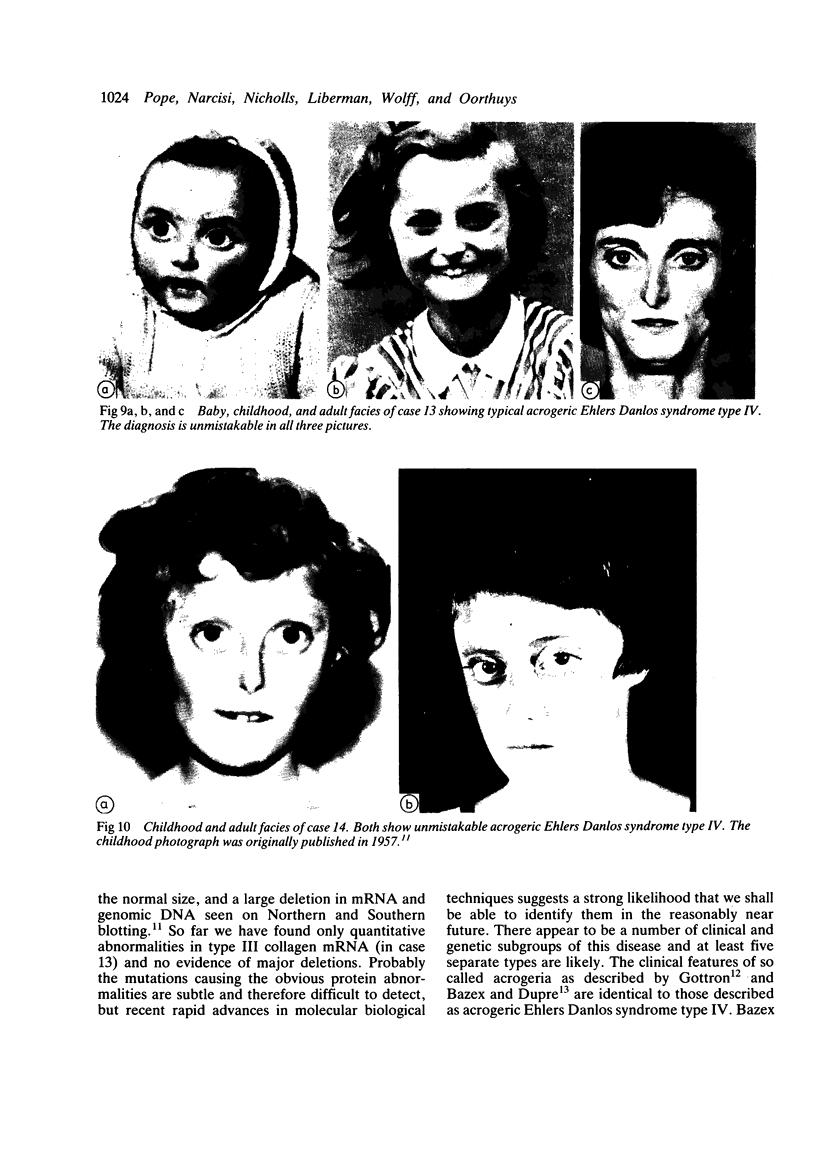
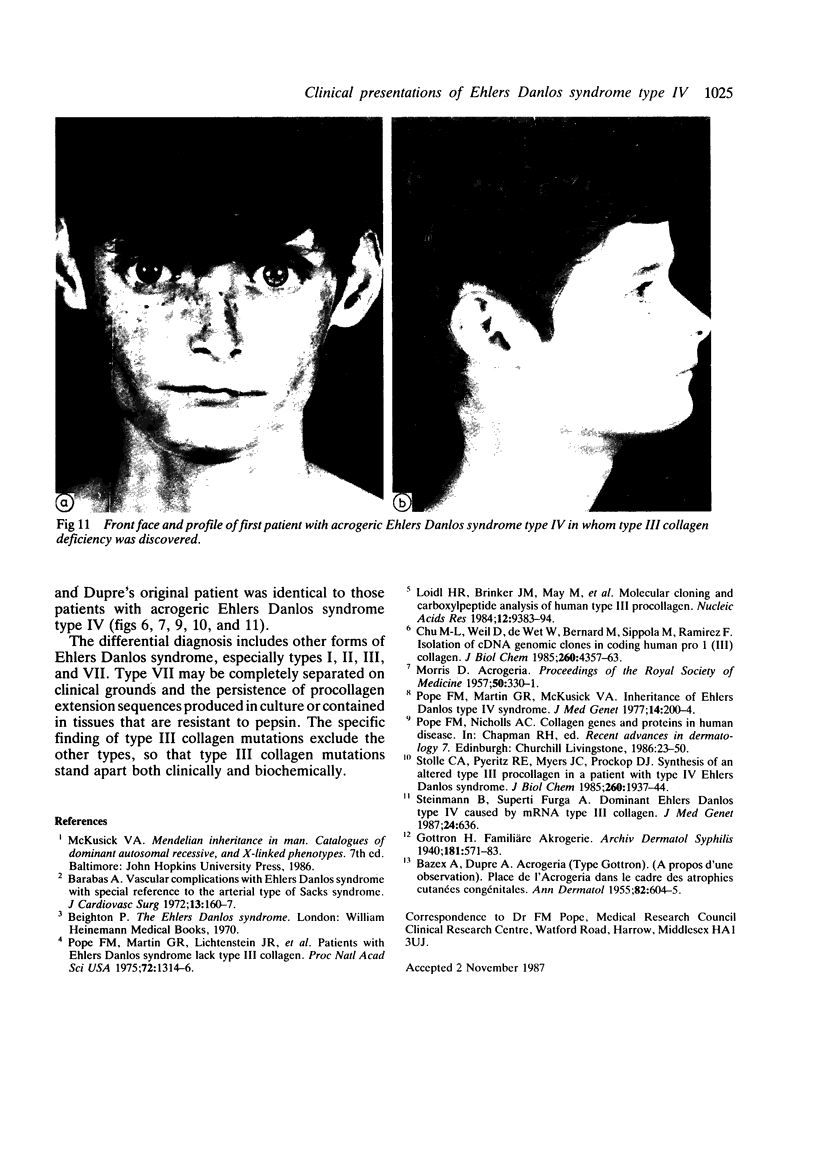
Images in this article
Selected References
These references are in PubMed. This may not be the complete list of references from this article.
- BAZEX A., DUPRE A. Acrogeria type Gottron; a propos d'une observation; place de l'Acrogeria dans le cadre des atrophies cutanées congénitales. Ann Dermatol Syphiligr (Paris) 1955 Nov-Dec;82(6):604–625. [PubMed] [Google Scholar]
- Barabas A. P. Vascular complications in the Ehlers-Danlos syndrome, with special reference to the "arterial type" or Sack's syndrome. J Cardiovasc Surg (Torino) 1972 Mar-Apr;13(2):160–167. [PubMed] [Google Scholar]
- Chu M. L., Weil D., de Wet W., Bernard M., Sippola M., Ramirez F. Isolation of cDNA and genomic clones encoding human pro-alpha 1 (III) collagen. Partial characterization of the 3' end region of the gene. J Biol Chem. 1985 Apr 10;260(7):4357–4363. [PubMed] [Google Scholar]
- Loidl H. R., Brinker J. M., May M., Pihlajaniemi T., Morrow S., Rosenbloom J., Myers J. C. Molecular cloning and carboxyl-propeptide analysis of human type III procollagen. Nucleic Acids Res. 1984 Dec 21;12(24):9383–9394. doi: 10.1093/nar/12.24.9383. [DOI] [PMC free article] [PubMed] [Google Scholar]
- Morris D. Acrogeria. Proc R Soc Med. 1957 May;50(5):330–331. [PMC free article] [PubMed] [Google Scholar]
- Pope F. M., Martin G. R., Lichtenstein J. R., Penttinen R., Gerson B., Rowe D. W., McKusick V. A. Patients with Ehlers-Danlos syndrome type IV lack type III collagen. Proc Natl Acad Sci U S A. 1975 Apr;72(4):1314–1316. doi: 10.1073/pnas.72.4.1314. [DOI] [PMC free article] [PubMed] [Google Scholar]
- Pope F. M., Martin G. R., McKusick V. A. Inheritance of Ehlers-Danlos type IV syndrome. J Med Genet. 1977 Jun;14(3):200–204. doi: 10.1136/jmg.14.3.200. [DOI] [PMC free article] [PubMed] [Google Scholar]
- Stolle C. A., Pyeritz R. E., Myers J. C., Prockop D. J. Synthesis of an altered type III procollagen in a patient with type IV Ehlers-Danlos syndrome. A structural change in the alpha 1(III) chain which makes the protein more susceptible to proteinases. J Biol Chem. 1985 Feb 10;260(3):1937–1944. [PubMed] [Google Scholar]



